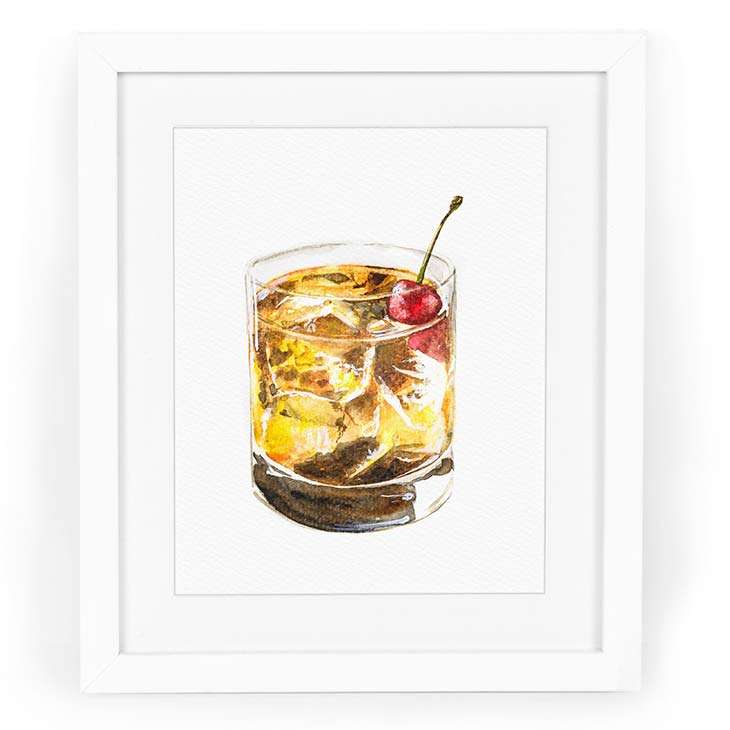Capturing the Significance of Whiskey Art With Unique Aesthetic Representations and Designs
The art of scotch prolongs past the fluid itself, manifesting through a range of aesthetic depictions that encapsulate its fabled heritage and workmanship. What continues to be to be revealed is how these progressing designs mirror not only the scotch itself yet additionally the transforming landscape of artistic interpretation. Whiskey Art.
The History of Scotch Art

As scotch manufacturing spread, so too did the wish to boost its experience through art. From the elaborate inscriptions on very early casks to the sophisticated tags of modern bottles, each aspect mirrors an unique creative vision, working as an aesthetic story of the whiskey's heritage.
In the 18th and 19th centuries, the increase of the commercial change further enhanced scotch art, causing cutting-edge packaging and advertising that caught consumer interest. Developers and musicians started experimenting with looks, imbuing whiskey-related images with symbolic definitions that conveyed notions of craftsmanship, tradition, and community.
Today, scotch art continues to progress, blending standard techniques with contemporary art forms. Whiskey Art. This ongoing dialogue in between the spirit and its aesthetic depiction highlights the enduring bond between bourbon and society, enriching the total experience for fanatics worldwide
Iconic Container Styles
While numerous elements add to the attraction of scotch, famous bottle designs play a crucial duty fit consumer assumption and boosting the general experience. The visual discussion of scotch bottles is not just an aesthetic consideration; it acts as a bridge between the product and the customer, stimulating emotions and establishing assumptions.
Distinctive forms, materials, and closures can elevate a bourbon brand's identification, making it instantaneously identifiable on crowded racks. The traditional Glenfiddich bottle, with its stylish tapered silhouette, shares a feeling of practice and craftsmanship, while the strong, contemporary style of the Balvenie container shows advancement and refinement. In addition, using colored glass or distinct textures can recommend the quality and personality of the scotch within.
Renowned designs commonly incorporate aspects of social heritage, symbolizing the brand's background and link to its roots. Brands like Jack Daniel's use a straightforward, robust style that reverberates with its American bourbon heritage. Ultimately, the impact of bottle style expands past mere performance; it envelops the significance of the brand name, welcoming customers to indulge and check out in the rich tapestry of scotch society.
Tag Art Work and Branding
Container layouts usually establish the phase for what consumers can anticipate, yet tag art work and branding play an equally significant role in interacting a scotch's identification. The tag works as the first factor of call in between the product and the customer, enveloping the essence of the whiskey within its aesthetic components.
Efficient label artwork incorporates typography, imagery, and shade to develop a story that resonates with the brand name's check over here heritage and target market. For instance, a tag featuring intricate images and classic fonts might evoke a feeling of custom and workmanship, attracting connoisseurs. In comparison, strong shades and contemporary layout aspects might draw in a more youthful market looking for advancement and excitement.


Photography and Visual Storytelling
Recording the significance of whiskey through photography and visual storytelling is an art type that boosts the brand name experience. This tool goes beyond mere product representation, delving into the elaborate stories that border each container. By using engaging images, digital photographers can stimulate feelings that reverberate with customers, ultimately forging a deeper connection to the whiskey brand.
Visual storytelling in whiskey photography typically uses rich structures, illumination, and structure to highlight the distinct attributes of the spirit. The interaction of light and darkness can emphasize the brownish-yellow hues of bourbon, while the selection of background components-- such as rustic barrels or classy glass wares-- can enhance about his the brand name's heritage or way of life associations.
Furthermore, capturing the ritualistic facets of bourbon usage, from the pouring to the tasting, welcomes customers right into a sensory experience, enabling them to think of the flavors and aromas that await. Each picture not just showcases the item however also narrates of craftsmanship, tradition, and the minutes that bourbon can improve - Whiskey Art. Thus, digital photography becomes an effective device in articulating the identity of bourbon brands, positioning them within the more comprehensive cultural landscape
Arising Patterns in Whiskey Art
The advancement of scotch art is progressively shaped by modern trends that mirror wider social changes and consumer choices. One popular fad is the combination of sustainability into art techniques. Artists are currently using eco-friendly procedures and recycled materials to develop whiskey-themed pieces, reverberating with environmentally mindful consumers. This shift not just highlights the significance of sustainability yet also improves the narrative surrounding bourbon production.
In you can check here addition, electronic art has actually risen in popularity, allowing for cutting-edge representations of scotch. Artists are leveraging innovation to craft immersive experiences, such as augmented truth installments that involve customers and give a deeper understanding of scotch's cultural value. This fad also includes social networks systems, where aesthetically striking content garners attention and promotes neighborhood amongst lovers.
In addition, collaborations between whiskey brands and musicians are coming to be more prevalent. These partnerships yield limited-edition packaging designs and exclusive artworks that celebrate both the craftsmanship of whiskey and the creativity of musicians. As bourbon art remains to advance, these arising fads will undoubtedly shape its future, fostering a vibrant junction of society, sustainability, and innovation within the scotch neighborhood.
Conclusion
In final thought, the art of whiskey encompasses a varied selection of graphes that show its rich heritage and workmanship. From legendary container designs and intricate tag art work to compelling photography, each component adds to a wider narrative that boosts the consumer's experience. As emerging fads, such as digital art and sustainability, remain to form this creative landscape, the multifaceted identification of scotch remains a sustaining resource of cultural link and exploration.

In verdict, the art of scotch encompasses a diverse selection of aesthetic representations that show its rich heritage and workmanship.